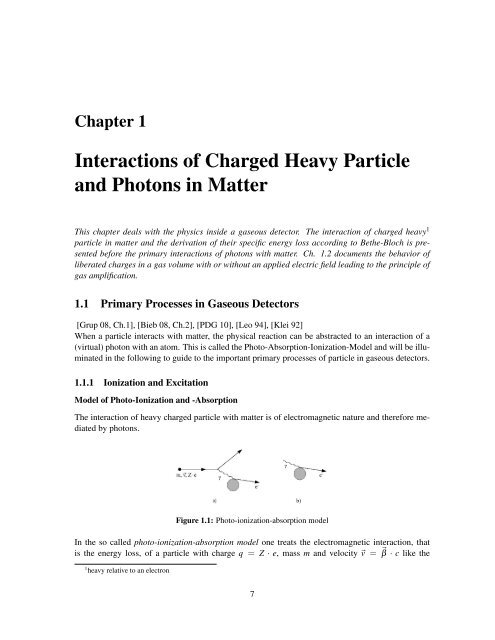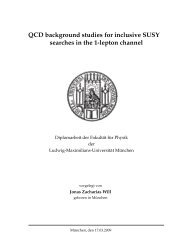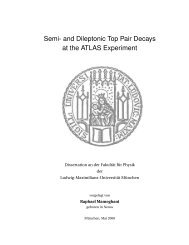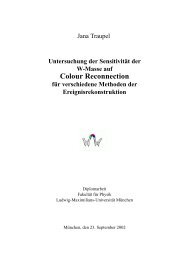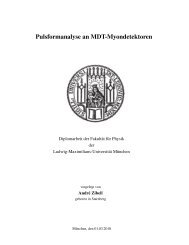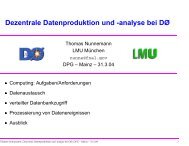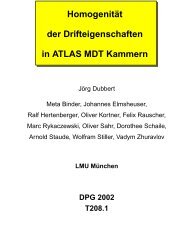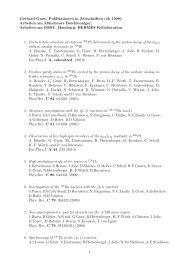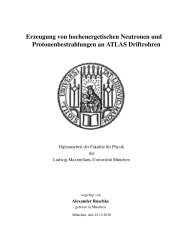development of micro-pattern gaseous detectors – gem - LMU
development of micro-pattern gaseous detectors – gem - LMU
development of micro-pattern gaseous detectors – gem - LMU
Create successful ePaper yourself
Turn your PDF publications into a flip-book with our unique Google optimized e-Paper software.
Chapter 1<br />
Interactions <strong>of</strong> Charged Heavy Particle<br />
and Photons in Matter<br />
This chapter deals with the physics inside a <strong>gaseous</strong> detector. The interaction <strong>of</strong> charged heavy 1<br />
particle in matter and the derivation <strong>of</strong> their specific energy loss according to Bethe-Bloch is presented<br />
before the primary interactions <strong>of</strong> photons with matter. Ch. 1.2 documents the behavior <strong>of</strong><br />
liberated charges in a gas volume with or without an applied electric field leading to the principle <strong>of</strong><br />
gas amplification.<br />
1.1 Primary Processes in Gaseous Detectors<br />
[Grup 08, Ch.1], [Bieb 08, Ch.2], [PDG 10], [Leo 94], [Klei 92]<br />
When a particle interacts with matter, the physical reaction can be abstracted to an interaction <strong>of</strong> a<br />
(virtual) photon with an atom. This is called the Photo-Absorption-Ionization-Model and will be illuminated<br />
in the following to guide to the important primary processes <strong>of</strong> particle in <strong>gaseous</strong> <strong>detectors</strong>.<br />
1.1.1 Ionization and Excitation<br />
Model <strong>of</strong> Photo-Ionization and -Absorption<br />
The interaction <strong>of</strong> heavy charged particle with matter is <strong>of</strong> electromagnetic nature and therefore mediated<br />
by photons.<br />
Figure 1.1: Photo-ionization-absorption model<br />
In the so called photo-ionization-absorption model one treats the electromagnetic interaction, that<br />
is the energy loss, <strong>of</strong> a particle with charge q = Z · e, mass m and velocity v = β · c like the<br />
1 heavy relative to an electron<br />
7


